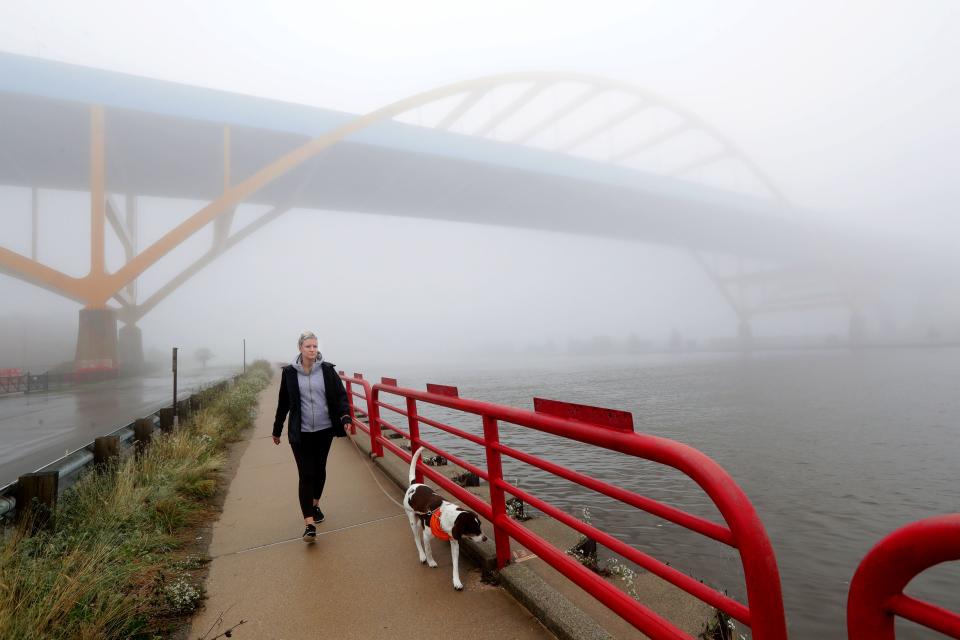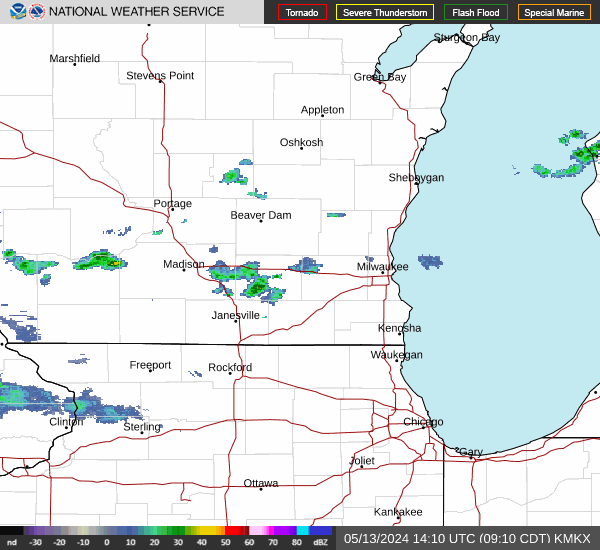Why was it so foggy Friday morning in Milwaukee?
If you were on the road early this morning, you likely noticed fog blanketing much of the Milwaukee area.
By now, much of the fog has dissipated since sunrise, though some remains over Lake Michigan into the mid-morning. But what caused this foggy day?
The fog was caused, in part, by a high level of low-level moisture, or humidity, plus additional moisture from recent rain in the area, said local National Weather Service meteorologist Andy Boxell. Additionally, last night's light winds brought a cooler airmass into the area, resulting in temperatures and dew points getting to be "about the same" at the surface, allowing fog to form.
Fog this morning will begin to dissipate after sunrise. Once the fog has lifted, warm and dry weather will persist through the weekend. Lakeshore areas will be cooler than areas inland with highs in the 60s expected. Rain will be likely for the start of the work week #wiwx pic.twitter.com/s33MNyYvyK
— NWS Milwaukee (@NWSMilwaukee) May 17, 2024
"We are starting to get to the time of year where, as vegetation greens up and we start to see crops growing in the fields, in more rural areas, you could see some fog in the low-lying areas in the early morning hours," Boxell said. "Not much of anything real widespread, but certainly you could see that patchy fog after nights when it's calm and clear out."
How to drive safely in fog
Earlier this morning, NWS encouraged drivers to use increased caution while driving. Safe driving tips in foggy conditions include:
Slow down
Use low-beam headlights
Leave plenty of distance ahead of you
Use wipers and defrosters as necessary
Be patient. Do not pass lines of traffic
Plan ahead, and allow for extra time
Consider postponing your trip until the fog clears
Boxell said no incidents have been reported related to this morning's fog.

What causes fog?
Fog is essentially "a cloud at the ground," Boxell said. For fog to form, the air needs to be saturated, meaning it's holding the maximum amount of moisture possible, so condensation can form. This usually requires ample moisture at the lower part of the atmosphere, right near the ground, Boxell explained.
Additionally, cooler temperatures are needed. If the night is too warm, temperatures generally won't be low enough to reach the dew point necessary for the saturation needed for fog. Fog also requires a night with relatively calm winds.
"If you have a lot of winds, you tend to be mixing up the atmosphere, and that doesn't allow condensation to form and then stay in place near the surface," Boxell explained.
Wisconsin weather radar

Wisconsin weather warnings
This article originally appeared on Milwaukee Journal Sentinel: What causes all the morning fog in Milwaukee?

